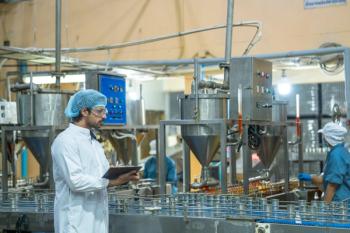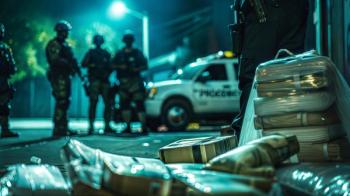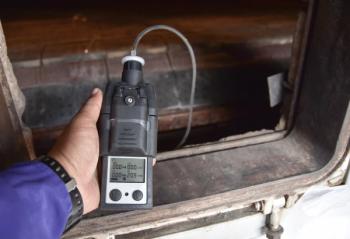
Spotlighting Spectroscopy Innovations at the American Academy of Forensic Sciences Conference
At the American Academy of Forensic Sciences Conference (AAFS) 2025, several sessions will focus on the use of spectroscopy in forensic analysis.
This week, the American Academy of Forensic Sciences Conference is taking place in Baltimore, Maryland. Bringing together industry leaders, forensic analysts, and vendors, among others, the conference serves as an opportunity for attendees to network and learn about the latest advancements in forensic analysis (1,2).
As part of the conference program, several talks and poster sessions feature discussion about the role of attenuated total reflectance (ATR) Fourier transform infrared (FT-IR) spectroscopy in forensic analysis. We highlight a few of these talks and poster sessions below.
On February 19, from 11:30 am to 1:00 pm, a poster session will take place in the exposition hall. One of these posters, titled “Forensic Profiling of Cigarette Paper Using ATR/FTIR Spectroscopy and Machine Learning/Algorithms,” explores the forensic potential of cigarette paper analysis using attenuated total reflectance/Fourier transform infrared (ATR/FT-IR) spectroscopy and machine learning (ML) (3). This poster presents research from Vishal Sharma and Akanksha Sharma of Panjab University.
By differentiating cigarette paper from similar materials and identifying specific brands, the poster highlights a novel approach to forensic evidence analysis. It shows how spectral data was preprocessed and analyzed using principal component analysis (PCA) and 15 ML algorithms, with the CatBoost classifier delivering the highest accuracy (3). The findings will demonstrate how cigarette paper, often overlooked at crime scenes, can provide crucial insights into an individual’s habits, social status, and potential links to criminal activity (3).
On February 20 at 9:45 am, a talk, titled “Sustainable Wood Sourcing and Species Identification Through ATR-FT-IR Spectroscopy and Machine Learning in Forensic Applications,” will take place. This talk will be delivered by Akanksha Sharma of Panjab University, and it addresses the limitations of traditional wood identification by integrating ATR/FT-IR spectroscopy with ML (3).
Sharma will discuss how isolation forest and principal component analysis to improve species discrimination were used to analyze chemical signatures in Eucalyptus, Dalbergia, and Populus species in India (3). Tree-based ML classifiers further enhance identification accuracy. This approach aids law enforcement in combating illegal logging, ensures the authenticity of wood products, and supports sustainable forestry management (3). By enabling precise wood forensics, the study contributes to biodiversity conservation and climate change mitigation (3).
Also on February 20, there will be a poster session including a presentation on “Analysis of Inorganic Oxidizing Salts in Intact and Chemically Reacted Consumer Fireworks Using Microscopical and Spectroscopic Approaches,” examining the composition of intact and chemically reacted consumer fireworks, focusing on identifying inorganic oxidizing salts that may be used in Improvised Explosive Devices (IEDs) (3). This poster will present research conducted by Sydney M. Hampton at Sam Houston State University.
The research presented in the poster will show how an analytical scheme that combines light microscopy, micro-Raman spectroscopy, ATR/FT-IR spectroscopy, and scanning electron microscopy with energy-dispersive X-ray spectroscopy (SEM/EDS) can characterize both unreacted fireworks and their post-detonation residues (3). The findings presented here will dive into all the abovementioned spectroscopic techniques, presenting their pros and cons when used in forensic applications.
By enhancing the ability to detect and classify explosive materials, this research supports forensic investigations and national security efforts (3). The integration of these advanced microscopical and spectroscopic methods offers a robust approach for forensic scientists to analyze explosive-related evidence with greater accuracy and efficiency (3).
During the same Thursday poster session, another poster, titled “Advancing Trace Evidence Identification Through ATR/FTIR Spectroscopy and Machine Learning for Textile Fibers Analysis,” will explore the use of ATR/FT-IR spectroscopy and ML for the non-destructive analysis of textile fibers in forensic investigations (3).
By developing a spectral database, forensic experts can rapidly and accurately identify unknown fibers, strengthening criminal investigations where other evidence may be lacking. The integration of ML enhances forensic workflows by automating fiber classification, reducing human error, and improving efficiency (3). Textile fibers are important pieces of evidence at crime scenes, particularly in assault cases (3). As textile production evolves, the database can expand to include new fiber types, ensuring forensic techniques remain current and effective (3).
References
- Forensic Mag, 77th Annual Scientific Conference of the American Academy of Forensic Sciences. Forensic Mag. Available at:
https://www.forensicmag.com/3694-Events/616065-77th-Annual-Scientific-Conference-of-the-American-Academy-of-Forensic-Sciences/ (accessed 2025-02-12). - American Academy of Forensic Sciences, AAFS 2025. AAFS.org. Available at:
https://www.aafs.org/annual-conference (accessed 2025-02-12). - American Academy of Forensic Sciences, Online Program. AAFS.org. Available at:
https://www.aafs.org/sites/default/files/media/documents/2025%20Final%20Program_1.28.25.pdf (accessed 2025-02-13).
Newsletter
Get essential updates on the latest spectroscopy technologies, regulatory standards, and best practices—subscribe today to Spectroscopy.





